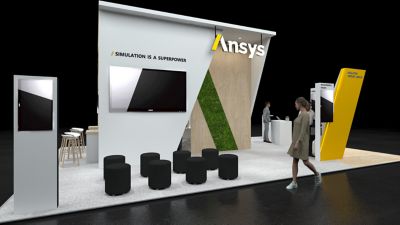Join our customer's live presentations!
Stefan Kuntzagk (Senior Engineer) - LUFTHANSA TECHNIK
“AeroSHARK – Shark skin on commercial aircraft and the role of CFD”
Wednesday, June 5 I 2:00pm - 2:45pm I Hall 6, Stand 214
Dr.-Ing. Veenu Tripathi (Senior Scientist) & Dr. Stefano Caizzone (Antenna Systems Group Leader) - DLR
"Safely Navigating Unfriendly Skies: Accurate Prediction of Jamming Influence on Aviation GNSS"
Thursday, June 6 I 2:00pm - 2:45pm I Hall 6, Stand 214
Matthias Fohrer (Senior Director EMEA Sales & Global Alliances ) - ARAS
"Simulation is Data Hungry! How to feed it with material-data and other design context by the digital thread"
Friday, June 7 I 11:00am - 11:45am I Hall 6, Stand 214

